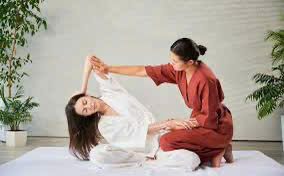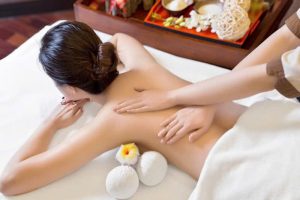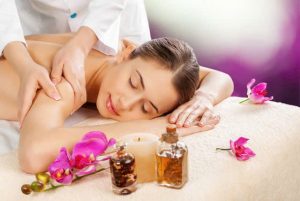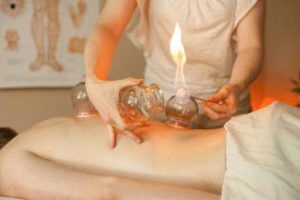Unlock top 5 Benefits of Proper Massages for Stress Relief & Better Sleep
In today’s fast-paced world, stress has become a common part of life, often taking a toll on our physical and mental health. Proper massages have emerged as a powerful remedy to combat stress, improve sleep quality, and enhance overall well-being. This blog explores the many facets of proper massages, emphasizing how they can be harnessed to relieve stress, sleep better, and even improve your skin—all within just 60 minutes. Whether you are new to massages or seeking to optimize your experience, understanding the proper massage techniques, their health benefits, and the potential pitfalls is critical. We’ll also guide you on how to choose the most suitable massage method for your needs.

Proper Massages
Proper massages serve as a holistic approach to nurturing the body and mind. By applying specific techniques correctly, they stimulate circulation, relax tense muscles, and promote a sense of peace. Proper massage techniques are essential to maximize benefits while avoiding potential negative effects.
In this section, we delve into the fundamentals of proper massages, including their principles, the importance of technique, and how they differ from improper approaches. We’ll also explore the significance of professional training and personal awareness in achieving optimal results.
The Foundations of Proper Massage Techniques
Understanding what constitutes proper massages begins with grasping foundational principles—compression, effleurage, petrissage, tapotement, and friction. These techniques must be carried out with correct pressure, rhythm, and position to ensure effectiveness. Proper massages focus not only on the muscles but also on fostering a relaxed state, balancing energy flows, and improving circulation.
A key element of proper massage is respecting individual needs. It involves adjusting pressure levels, avoiding sensitive areas, and ensuring the client’s comfort at all times. Therapists must possess extensive knowledge of anatomy and physiology to perform techniques safely and effectively. Proper massages are tailored to each individual’s health status, skin sensitivities, and personal preferences.
Achieving consistency and precision in these techniques often requires professional training. Yet, self-massage can also be effective if performed with awareness and proper guidance. The essential principle is to approach massage as a therapeutic process, not just a superficial rub. When done correctly, proper massages can unlock extraordinary health benefits while minimizing risks.
The Role of Environment and Preparation
Creating an ideal environment enhances the efficacy of proper massages. A calm, warm, and clean space with soothing music and aromatherapy can facilitate relaxation and make the experience more restorative. The right environment reduces distractions, allowing both therapist and recipient to focus fully on the process.
Preparation also involves understanding the client’s medical history and specific issues—be it stress, muscle tension, skin conditions, or sleep disturbances. Proper massage practices incorporate these insights into tailored treatment plans that optimize outcomes and ensure safety.
Moreover, personal readiness is important; both clients and therapists should approach the session with mindfulness, patience, and an open attitude toward healing. Proper routine maintenance of massage equipment, using quality oils or lotions, and hygiene practices further contribute to nourishing the process. When every detail aligns with best practices, proper massages can deliver profound physical and mental health benefits.

The Impact of Proper Massages on Overall Health
While many think of massage mainly as a relaxation technique, its health impact extends far beyond that. Proper massages influence immune functions, hormonal balance, and even mental clarity. They can also play a role in managing chronic conditions like fibromyalgia, arthritis, and migraines.
Research indicates that proper massages boost the production of serotonin and endorphins, the body’s natural mood lifters. Consistent sessions help in regulating cortisol, the stress hormone, resulting in better emotional resilience and mood stability. Additionally, massages improve lymphatic drainage, which helps detoxify the body and supports skin health.
In essence, proper massages are a comprehensive therapeutic modality that reinforces physical health, emotional stability, and skin vitality. Developing expertise in correct technique ensures these benefits are fully realized, making massage an integral component of holistic wellness.
Relieve Stress
Stress is a silent predator that deteriorates health over time, affecting everything from mental clarity to physical immunity. Proper massage techniques are one of the most natural and effective ways to relieve stress without reliance on medication.
In this section, we explore how proper massage practices activate the parasympathetic nervous system—the body’s relaxation response—leading to stress reduction and mental calmness.
The Science Behind Stress Reduction and Massage
When you experience stress, your body releases hormones like adrenaline and cortisol. While these are useful in fight-or-flight situations, chronic elevation can cause harm—elevating blood pressure, impairing immune function, and disturbing sleep. Proper massages stimulate the vagus nerve and promote the production of relaxation-related neurotransmitters.
Through techniques like gentle effleurage or long, slow strokes, massages decrease heart rate and blood pressure, helping the nervous system shift from alertness to relaxation. These physiological responses significantly lower perceived stress levels. When properly applied by trained practitioners, massage can be a powerful tool for stress management, helping break the cycle of tension and anxiety.

Mental Clarity and Emotional Balance
Beyond physical relaxation, proper massages influence mental health by releasing emotional blockages stored in the muscles. This process often results in enhanced mental clarity, mood elevation, and a sense of emotional balance. The tranquil environment and mindful touch help clients disconnect from worries and center their awareness on the present moment.
Moreover, proper massages can foster a sense of trust and safety. The physical touch, when performed correctly, activates oxytocin – the love hormone – which further reduces stress and promotes bonding and emotional well-being. This synergy of physiological and psychological effects highlights the unique capacity of massages to relieve stress holistically.
Practical Tips for Stress-Relief Massage Sessions
To maximize stress relief, certain best practices should be followed. First, the choice of massage technique matters; slow, gentle strokes are preferred for relaxation. Depth should be adjusted according to tolerance levels, with an emphasis on comfort.
Second, breathing exercises integrated into the massage can enhance its calming effects. Guiding clients to breathe deeply and rhythmically aids in relaxation. Finally, setting a calming atmosphere—dim lighting, soothing sounds, and aromatherapy— amplifies the stress-relief benefits.
When performed as part of regular routines, proper massages can significantly diminish daily stress levels, contributing to improved mental health and overall life satisfaction. Incorporating this practice into your wellness routine offers a natural and enjoyable pathway to peace of mind.
Sleep Better
Quality sleep is essential for a healthy, vibrant life, yet millions struggle with insomnia or disrupted sleep patterns. Proper massages are a non-invasive, drug-free solution that can significantly sleep better by calming the nervous system and relaxing the body.
In this section, we analyze how proper massages promote restful sleep, explore the biological mechanisms involved, and suggest techniques to optimize sleep benefits.
How Massage Enhances Sleep Quality
Massage therapy influences the sleep cycle by reducing sympathetic nervous activity—the body’s arousal mode—while activating parasympathetic responses that foster relaxation. It increases the production of serotonin, a precursor to sleep-inducing melatonin, thus helping regulate sleep-wake cycles.
Furthermore, proper massage techniques alleviate muscle tension and soreness, which often impede restful sleep. Unrelieved discomfort can trigger sleeplessness, especially in individuals with chronic pain or fibromyalgia. Proper massages target these areas, easing discomfort and allowing the body to settle into restorative sleep stages.
The Role of Massage in Managing Sleep Disorders
For those suffering from sleep disorders, consistent massage sessions offer compounded benefits. They help decrease anxiety, improve mood, and lower levels of stress hormones—all of which are often linked to insomnia. Research indicates that even a single massage session can improve sleep quality, with regular treatments producing cumulative benefits.
In particular, massage can be highly effective for shift workers, pregnant women, and seniors experiencing sleep disruptions. For pregnant women, specific techniques like prenatal massage help ease discomfort and promote relaxation, resulting in better sleep quality.

Techniques to Maximize Sleep Benefits
Optimizing proper massages for sleep requires focusing on calming techniques. Long, slow strokes, gentle kneading, and soothing effleurage are particularly effective. Incorporating calming scents like lavender or chamomile can enhance relaxation and prepare the mind for sleep.
Timing also matters—massages scheduled closer to bedtime tend to be more effective. Using warm oils, maintaining a quiet environment, and encouraging mindful breathing during the session help deepen relaxation, making it easier to fall asleep—and stay asleep.
Providing clients with post-massage tips, such as hydration, avoiding caffeine, and establishing a bedtime routine, can further reinforce sleep improvements. Proper massages become a gentle yet powerful tool in the quest for longer, more restful sleep.
And Improve Your Skin – All in Just 60 Minutes of Proper Massages
Skin health and appearance reflect internal health, and massage plays a vital role in enhancing skin vitality. With just 60 minutes of proper massages, you can stimulate circulation, promote detoxification, and increase collagen production—all key factors for improving your skin.
This section examines how massage enhances skin health, the specific techniques involved, and the science behind skin rejuvenation.
Benefits of Massage on Skin Health
Massaging the skin increases blood flow, delivering oxygen and nutrients more efficiently to skin cells. This process accelerates tissue repair and collagen synthesis, leading to firmer, more elastic skin with fewer signs of aging. Additionally, regular massage helps break down scar tissue, reduce puffiness, and diminish the appearance of cellulite.
Another benefit of proper massage is detoxification. Gentle lymphatic drainage techniques stimulate lymph flow, removing toxins and excess fluids that cause swelling and dullness. This detoxification enhances skin clarity and brightness.
Techniques for Skin Rejuvenation
Techniques like effleurage and petrissage are particularly effective for skin health. Using upward strokes, gentle kneading, and lymphatic drainage movements, therapists can stimulate collagen and elastin production. Application of suitable oils or serums further enhances penetration and benefits.
For skin that is sensitive or prone to acne, special care must be taken to avoid aggravating skin conditions. Professional advice and customized treatments ensure that massage benefits are maximized without adverse effects.
Personal Care and Self-Massage Tips
Incorporating self-massage routines can maintain and boost skin health. Using facial rollers, gua sha tools, or gentle finger strokes daily can improve skin tone and reduce puffiness. Proper hydration, balanced nutrition, and adequate sleep complement the effects of massage for healthier skin.
Regular massage, combined with a holistic skincare routine, results in a radiant complexion and a more youthful appearance. The key lies in consistent practice and tailored techniques that suit individual skin types.
Proper Massages – What is the Proper Massages Way to Perform?
Performing proper massages involves mastering specific techniques, understanding anatomy, maintaining hygiene, and creating an optimal environment. This section details the protocols and best practices necessary to execute massage sessions professionally and effectively.
Establishing a Professional Approach
A proper massage begins with setting a clear intention tailored to the client’s goals—whether stress relief, pain reduction, or skin enhancement. Proper communication ensures client comfort and safety. The therapist should conduct an initial assessment, noting any contraindications or sensitivities.
Adherence to hygiene standards—clean linens, sanitized equipment, and personal cleanliness—is fundamental. Therapists must also maintain a calm, respectful demeanor, fostering trust and relaxation.
Step-by-Step Methodology
Creating a structured routine ensures all areas receive appropriate attention. Starting with light effleurage warms up the muscles, followed by targeted techniques like petrissage or deep tissue work as needed. Consistent pressure, rhythm, and smooth transitions between strokes are hallmarks of proper massages.
The sequence should flow logically—progressively deeper techniques or focus areas—while respecting client feedback. Using high-quality oils and ensuring proper positioning enhances comfort and efficacy.
Techniques for Different Needs
Different massage styles—Swedish, Deep Tissue, Shiatsu, Lymphatic Drainage—require tailored approaches. For example, proper massages for relaxation prioritize gentle strokes, while therapeutic massages involve deeper pressure. Knowing the distinctions allows practitioners to customize sessions effectively.
In summary, proper massages demand a blend of technical skill, anatomical knowledge, sensory awareness, and ethical practice. When each element is aligned, massage becomes a powerful healing art that maximizes safety and benefits.
What Health Benefits Does Proper Massage Bring?
The comprehensive health benefits of proper massage are well-documented and include physical, mental, and emotional improvements. This section reviews the vast spectrum of positive outcomes that can be achieved through appropriate massage therapy.
Physical Healing and Pain Relief
Massage relieves muscle tension, reduces chronic pain, and accelerates recovery from injuries. Techniques such as deep tissue massage target specific areas of dysfunction, promoting blood flow and facilitating tissue repair. Proper massage also alleviates soreness, stiffness, and joint discomfort, enhancing mobility.
Moreover, massage supports circulatory and lymphatic systems, which are vital for flushing toxins and nourishing tissues. This systemic effect leads to better organ function and healthier skin, complementing overall health.
Mental and Emotional Well-Being
Beyond physical benefits, proper massages positively influence mental health. The release of endorphins and serotonin fosters feelings of happiness and well-being. Regular sessions can reduce anxiety, depression, and stress-related disorders.
Massage therapy also helps with sleep disorders, boosts self-esteem through improved body image, and enhances concentration. These psychological benefits create a positive feedback loop, encouraging continued self-care.
Functional Improvements and Quality of Life
Massages can improve posture, reduce headaches, and ease respiratory issues when associated with relaxation of chest muscles. For seniors and individuals with chronic conditions, consistent massage therapy can translate into higher quality of life, greater independence, and less reliance on medication.
Furthermore, proper massages promote body awareness and mindfulness, empowering individuals to maintain healthier habits. The cumulative effects contribute significantly to longevity and vitality.
The table below summarizes key health benefits of proper massage:
| Benefit Category | Specific Benefits | Impact on Overall Health |
|---|---|---|
| Physical | Pain reduction, improved circulation, skin health | Enhanced physical function and appearance |
| Mental | Stress relief, anxiety reduction, mood enhancement | Better emotional resilience and mental clarity |
| Functional | Better posture, mobility, reduced headaches | Improved daily functioning and QOL |
If Done Incorrectly
Even though massage offers numerous benefits, improper techniques or untrained application can cause adverse effects. A clear understanding of correct practice is necessary to avoid pitfalls.
Risks of Poor Technique
Incorrect pressure—either too heavy or too light—can cause bruising, soreness, or tissue damage. Overly aggressive massage might exacerbate existing injuries, induce nerve pain, or lead to muscle tearing. Conversely, insufficient pressure may render the massage ineffective.
Applying massage to areas with infections, open wounds, or acute inflammation can worsen health conditions. Similarly, neglecting client comfort or failing to communicate can lead to anxiety or physical discomfort.
Common Mistakes and Their Consequences
Practitioners unfamiliar with anatomy may accidentally hit sensitive structures or apply techniques that don’t target the problem areas. For example, massaging directly over a herniated disc or varicose veins can cause complications.
From the client’s perspective, improper massage might result in increased stress, soreness, or even injury requiring medical attention. Poor hygiene practices can also result in infections and skin problems, underscoring the importance of professionalism.
Negative Effects on Well-Being
Beyond physical harm, improper massage can undermine trust and demotivate individuals from seeking further therapy. This negative perception discourages the adoption of beneficial practices and may escalate into skepticism about massage’s efficacy.
Ultimately, if massage practitioners lack proper training or experience, the health benefits they aim to provide might be overshadowed by unintended harm. For this reason, selecting qualified professionals and understanding proper massage protocols are vital.
What Are the Possible Consequences and Negative Effects?
While proper massages are generally safe, the potential for negative effects exists if the technique is improperly executed or if contraindications are ignored. It is essential to recognize these risks for safe practice.
Physical Reactions to Improper Massages
Some individuals may experience tenderness, bruising, or increased pain after a session if pressure was too intense or techniques were improperly applied. In rare cases, blood clots or nerve compression could be aggravated by improper manipulation.
People with certain health conditions—such as osteoporosis, cancer, infections, or blood disorders—must exercise caution, and massage should be coordinated with healthcare providers. Ignoring these factors can lead to serious complications.
Psychological and Emotional Repercussions
For some clients, massage can inadvertently evoke emotional distress if personal boundaries are not respected or if the environment is not supportive. This can manifest as anxiety, discomfort, or even retraumatization in sensitive individuals.
Therapists must be attentive to these responses, ensuring consent, communication, and an empathetic approach. Neglecting these aspects can diminish the therapy’s benefits and harm the client’s psychological health.
Legal and Ethical Considerations
Unqualified or unethical practitioners risk legal repercussions, damage to reputation, or harm to clients. Unauthorized or substandard treatments may not adhere to safety standards, resulting in injuries or malpractice claims.
Ensuring proper training, valid licensing, and adherence to ethical guidelines helps mitigate these risks. Clients should be informed about the qualifications of their therapists and provided with a safe environment for treatment.
How Can We Choose the Most Suitable Massage Method for Ourselves?
Selecting the best massage approach tailored to your needs ensures optimal benefit and safety. This process involves understanding key factors such as personal health, goals, and preferences.
Assessing Your Personal Goals and Needs
Begin by identifying what you seek from massage therapy. Whether it’s relieving stress, easing muscle tension, improving sleep, or addressing skin concerns, your goals will influence the choice of technique. For example, Swedish massage is excellent for relaxation, while deep tissue suits chronic pain.
Consider any medical conditions or sensitivities. Pregnant women, individuals with chronic illnesses, or those recovering from injury may require specialized techniques like prenatal massage or gentle lymphatic drainage.
Researching Different Massage Methods
Educate yourself about various types of massage—such as Shiatsu, Ayurveda, Thai massage, or reflexology—and their respective benefits. Understanding how each modality addresses specific issues allows you to make an informed decision.
Consult reputable sources, read reviews, and seek recommendations from licensed professionals. Visiting certified therapy centers or clinics ensures practitioners are qualified and experienced in the targeted massage style.
Factors to Consider When Choosing a Practitioner
The practitioner’s qualifications, experience, and reputation matter greatly. Look for licensed therapists with specialized training relevant to your needs. Personal comfort and trust are also critical since relaxation hinges on feeling safe and respected.
Discuss your goals and concerns beforehand. Open communication enables the therapist to customize the massage, ensuring your needs are adequately addressed. Remember, a good therapist will guide you in choosing the most suitable method and provide post-session advice.
In making an informed choice, aligning your health goals with qualified expertise guarantees that proper massages will deliver the maximum benefits safely and effectively.https://www.google.com/knowledgegraphshares?client=mobilesearchapp&sca_esv=b028dc8ec1d9dff5&bih=879&biw=428&channel=iss&cs=0&hl=vi&rlz=1MDAPLA_viAE995AE995&v=372.0.765951532&sxsrf=AE3TifM54Yon2BzKzAbwaxh-sMX16CRcag:1750078915591&kgmid=/g/11ldd2b847&q=Thai+massage+-+spa+massage+home+service+downtown+Dubai&shndl=30&shem=lcuae,uaasie&source=sh/x/loc/tile/m1/5&kgs
Conclusion
Proper massage techniques unlock a multitude of health benefits, from relieve stress and sleep better to improve your skin, all within just 60 minutes. Mastering the art of proper massages involves understanding and applying specific techniques confidently, creating an environment conducive to healing, and choosing methods tailored to individual needs. When performed correctly by trained professionals, massage therapy can serve as a natural, enjoyable, and effective tool to enhance physical and mental well-being. Conversely, improper application or unqualified practitioners can lead to adverse effects, emphasizing the importance of safety, awareness, and personalization. By making informed choices and practicing appropriate techniques, everyone can harness the incredible potential of proper massages to lead healthier, more balanced lives.https://jobedubaispa.com/need-a-massage/
